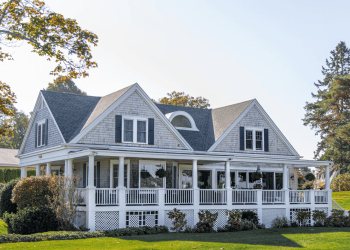Table of Contents
Human requirements for modernity, comfort, and technology drive the change in architecture. The origin of the architecture dates back to when humans stopped living in caves. Since architecture reflects the spirit of the time, the best way to understand how it evolved is by comparing designs of different eras. From the Neolithic period to modern architecture, the world has seen iconic architectural eras influenced by religion, culture, geography, traditions, and human intellect. The changes to the architectural world have been immense as different materials, designs, and methods became available to the people. Though it is almost impossible to cover all the architectural eras, certain eras are identified as the changing or iconic periods for architecture. So, let’s take a look:
1. Neolithic or Prehistoric Architecture
Long before humankind witnessed the mesmerizing western architecture of the Greeks and the Romans, there was the Stone Age. Prehistoric architecture is the foundation of designing structures. The era includes megaliths, stone circles, and mounds which often puzzle archaeologists to this day. Some of the most monumental structures from prehistoric architecture include thatch and mud structures, cliff dwellings, and Stonehenge, marking the dawn of architecture.
Unlike today’s architecture, which consists of structures that embody a product design, the ancient structures were more about imitating astronomical bodies and nature. Some monuments were built in the image of the stars or as a tribute to gods or higher power. One of the significant evolutions of architecture compared to today’s is that modern architecture is based on human needs rather than as a tribute to cultural values.
2. The Ancient Egyptian Architecture
From geometric structures and complex fortifications, we jump to the ever-famous pyramids of Egypt. Even though the structures in this era also reflected the gods’ omnipotence, the structural design was significantly more advanced and dynamic. In this era, obtaining immense vertical reach such as the pyramids using a wider base received great importance. Egyptian architecture is full of engineering marvels, as they opted for heavy constructions without using load-bearing arches. They used closely placed columns to support the heavy stone, elaborately carved and brightly painted. Western architecture has taken inspiration from Egyptian columns, which also became fashionable during the 1800s.
3. The Classical Architecture
The classical era refers to the architecture in ancient Rome and Greece. Most structures in this era were symbols of wealth and power, just like the tombs in ancient Egypt. Most of the temples and building interiors consisted of the first Doric columns developed by the Greeks. In this period, the architecture evolved from geometric shapes to vaults, domes, and arches. Most of the construction in Greece was being done with the help of fired-clay roof tiles.
The Romans, on the other hand, took inspiration from both Greek and Egyptian architecture. Still, they often made their structures heavily detailed and more circular. Ornamented and decorated buildings remain the highlight of Roman architecture. They also brought about a revolution in construction with the use of concrete. It led them to explore other construction materials such as unburned bricks faced with stucco, marble, and volcanic rock. The earlier Roman structures mostly consisted of these materials.
4. The Industrial Revolution
Arches, pointed spires, columns, clustered columns, entablature, and stained-glass windows inspired most architecture in the 12th century. After that came the pre-industrial revolution – a period between the Gothic era and the beginning of the industrial revolution. During this time, the Baroque, Rococo, Neoclassicism, and Renaissance were the most popular architectural styles. Structures like the great Palace of Versailles in France represented the luxury and lavish detailing of the architectural design of that period.
Fast-forwarding to the industrial revolution, we see a drastic change in global architecture driven by strength and height never achieved before. Due to the availability of durable and malleable materials like iron and glass, the construction design soon incorporated taller and lighter buildings with dooms and glass porches.
However, there is one architectural style worth mentioning. It is the Baroque that succeeded Renaissance in the early 17th century. Baroque architecture promoted an accessible approach to architectural design and diversity. Architecture in this era was all about drama, fragmentary ornamental elements, and a general lack of correspondence between the exterior and the interior. For most of the 18th century, architecture was all about reviving older styles and art.
5. Today’s Modernist Architecture
For most of the 19th and 20th centuries, the architecture around the world consisted of well-proportioned structures brought by the Renaissance era. The trend then quickly evolved into Art Nouveau, which mostly included arches, Japanese-like surfaces with mosaics and curved designs, and asymmetrical buildings. Soon the architecture evolved into what’s known as Beaux-Arts Classicism architecture which characterizes elaborate ornamentation, symmetry, order, and traditional designs. Next comes the Neogothic and Art Deco era, which featured skyscrapers and gargoyles and incorporated arts, textiles, and patterns into the buildings.
We now come to modernism which dominated most of the 20th and 21st century’s architectural style and incorporates astonishing diversity compared to the past eras. Today’s architecture is all about functionality and meeting needs rather than imitating nature. Modern-day structures are a blend of Structuralism, Art Moderne, Brutalism, Deconstructivism, and Formalism. Experts say that Berthold Luberkin, a Russian architect, and the German architect Erich Mendelsohn who introduced expressionistic work, are where the roots of modern architecture lie. Therefore, it is safe to say that modern architecture also represents expressionism.
However, post-modern architecture took elements from the era’s gone by and introduced trends re-inventing historical architecture with a modern touch. Nonetheless, the current architecture is now heavily influenced by the use of technology. Designs are rather pushed towards extreme preciseness with software help while using sustainable materials such as glass, steel, and iron. Today’s structures aim to stand the test of time instead and preserve the evolution of humankind from the stone ages.
Conclusion
The change in architecture is not simply the change in style. Still, it represents the influence of the culture of that particular time. Today’s architecture has evolved from representing symbolism or cultural values to reflecting status symbols. Luckily, we didn’t forget our past. Even today, architects take inspiration from classical structures like those of gothic architecture and neo-modernism style.








